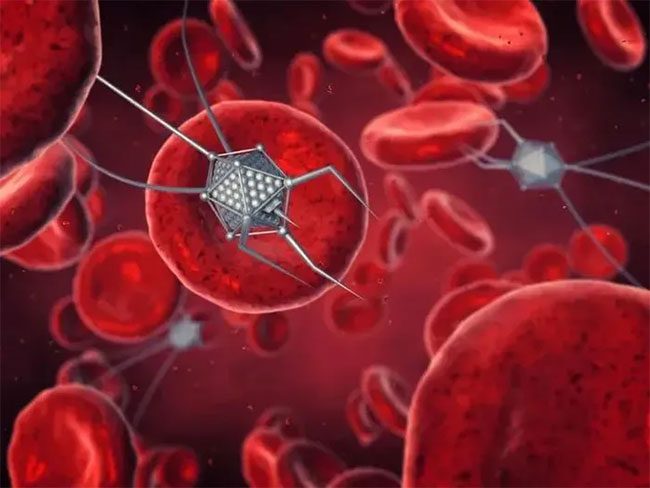What if there was a magic robot capable of curing any disease? That’s a silly question. Everyone knows that no machine can do that. But perhaps a swarm of tens of thousands of tiny automated bots could make it happen?
This idea isn’t drawn from the game Metal Gear Solid; rather, it’s a completely feasible scenario stemming from nanobot medical technology. While in science fiction films, tiny metal robots are often created through a type of miniaturization technology akin to magic, the reality of nanobot technology is much more fascinating.
According to TheNextWeb, a group of researchers from Australia has developed an impressive prototype that gives us a glimpse into the future of modern medicine.
Referred to as “autonomous molecular machines,” this new nanotechnology does not rely on a traditional army of tiny metal robots but opts for a more natural approach. The research team’s documentation states: “Inspired by biology, we have designed and synthesized an origami DNA receptor that can interact in a multivalent manner to form stable complex structures, and can also rapidly form subgroups.”

Special nanobots can transmit more than just DNA information.
DNA nanobots are artificial machines measured in nanometers, composed of DNA and proteins. They are capable of autonomous operation because DNA itself is a machine with a self-assembly mechanism.
Our natural DNA not only carries biological codes but also knows when to execute those codes. This is part of the reason why your left and right legs tend to grow at similar rates.
Previous research in DNA nanotechnology has shown that self-assembling machines can transmit DNA codes, much like natural DNA does.
However, the technology developed by the Australian scientists is unlike anything we’ve seen before.
According to the research report: “We use origami DNA receptors to demonstrate stable interaction processes, which involve the rapid exchange of both DNA and protein subgroups, highlighting the applicability of our approach to any molecular group…”
The aforementioned special nanobots can transmit a lot more than just DNA information. Theoretically, they could distribute any protein chain throughout a designated biological system.
In simple terms: We will be able to program swarms of nanobots to hunt down bacteria, viruses, and cancer cells within our bodies. Each member of the nanobot swarm could carry a specific protein, and when they encounter faulty cells, they could arrange their proteins into formations to eliminate the threat.
This is akin to having an elite army of killer robots floating in your bloodstream, hunting down monsters to destroy.
Although we are still quite a distance from that reality, this research represents a significant leap towards the future. This is the first time a DNA nanobot has been able to carry any type of payload!
Scientists could even use these nanobots to create smart materials capable of automatically responding to pressure—similar to self-healing clothing or glass.
Perhaps most intriguingly, in the distant future, we might be able to create perfectly functioning molecular computers using DNA nanobots.
In the next century or two, every human could have molecular computer systems inside their bodies. These living machines would essentially build and control “biological factories” within the body, producing swarms of killer nanobots from the proteins we consume. They would help us avoid all diseases throughout our lives.
The coolest part is: These computers would have perfect security. We inherit them from our parents’ DNA, making them like a part of us, just like our brains or hearts—completely unnecessary to operate on 5G!



















































